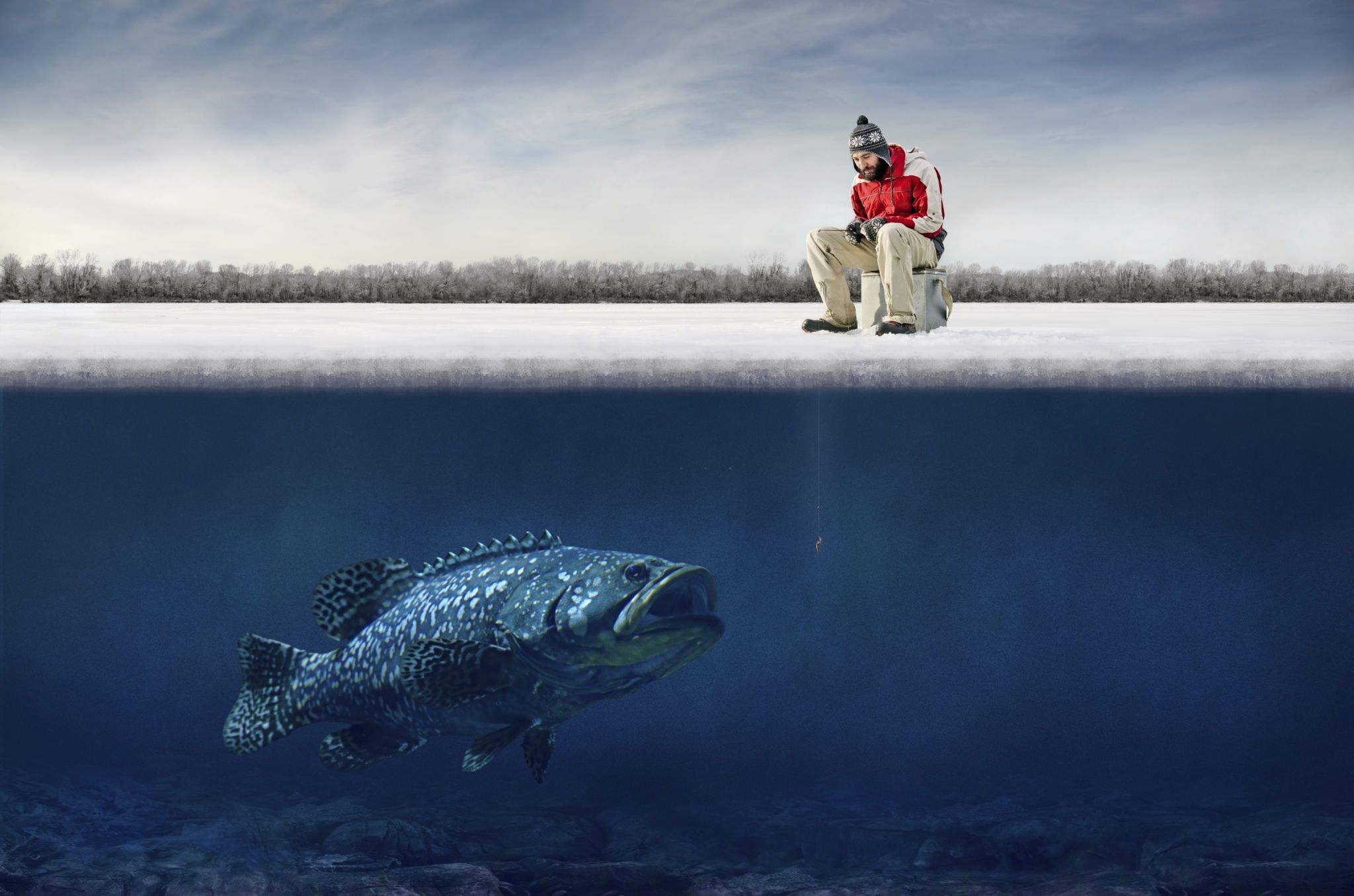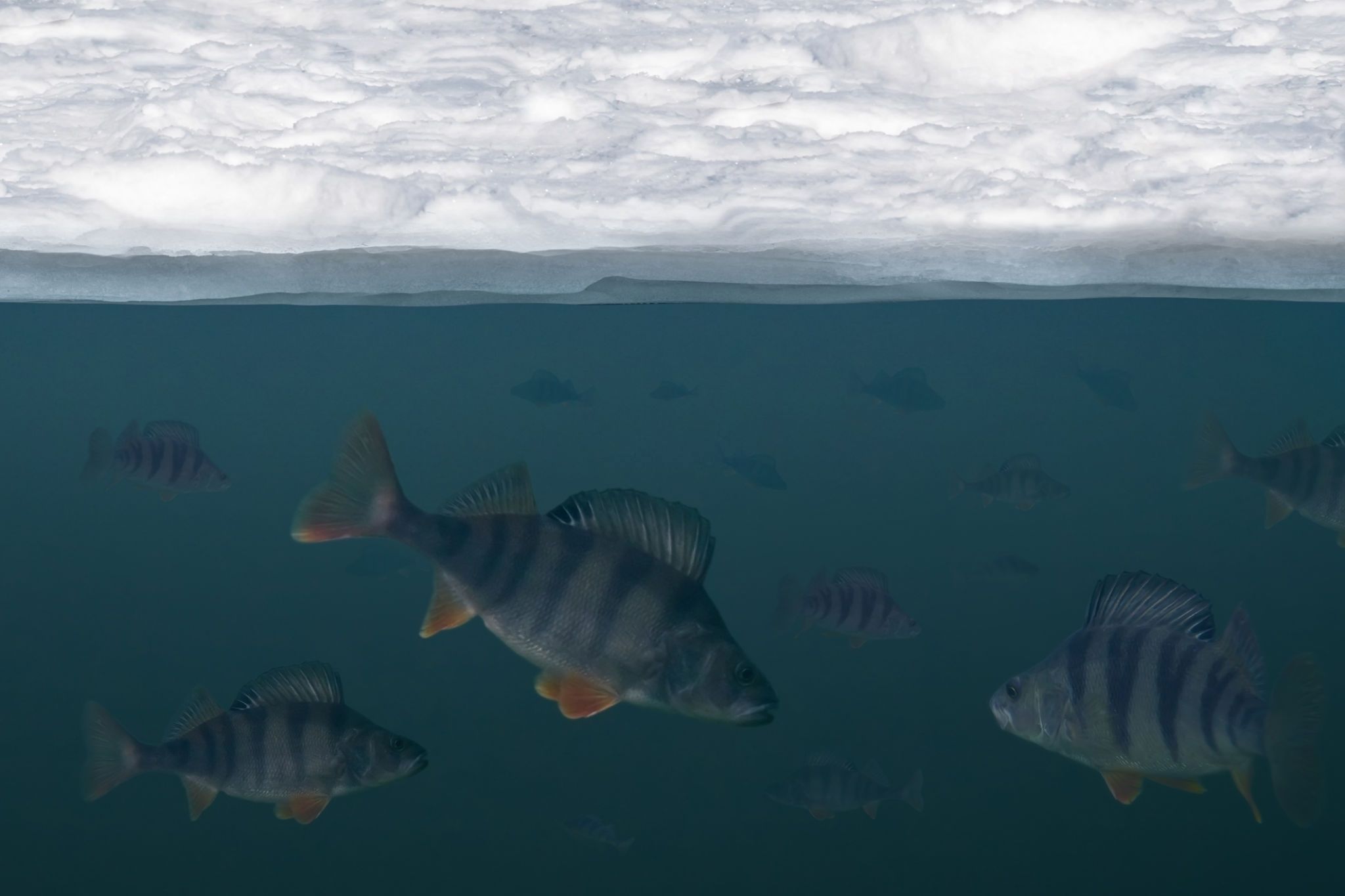You are probably wondering – how do fish survive in a frozen pond?
It is common to see fish swimming in a moving body of water. But when the temperature hits subzero, how are they able to do this? Can they still swim and survive in the icy water?
If you are curious about these topics, then you should keep reading. We’ll let you in the fascinating information on how fish survive – and even thrive – despite the frozen water during winter. So let’s jump right into it!

How Do Fish Survive in a Frozen Pond During the Winter
During the frigid winter season, bodies of water freeze and form into ice.
But even with this scenario, you will be amazed to find out that aquatic creatures such as fish can survive perfectly well. How is this possible?
Just imagine the icy water bodies of the Antarctic and Arctic oceans, which are home to fish and other marine animals. For several years, the way of life in these bodies of water has remained the same. And yes, animals that feed on fish are able to survive as their sources of food continue to live underneath the icy water.
Let’s think about how nature works.
It is a fact that liquids freeze at 0 degrees celsius. Thus, when the temperature outside goes below zero and reaches the freezing point, ponds become frozen.
Interestingly, it is only the top portion of the pond that freezes. If you survey the depths of the water, this area remains in a fluid form. It is not frozen unlike the top layer.
Moreover, there is oxygen that remains underneath all the thick layers of ice. As a result, fish and marine creatures are able to live life as normal despite the frozen layer on top.
The Mystery Behind the Frozen Water in Winter
Now, the question is – how does the water remain fluid underneath? Why doesn’t it freeze and turn into a massive ice cube?
The answer is quite simple, yet with some intricacies.
For instance, liquid generally expands when heated. However, this rule does not involve water. In fact, when you heat water, the volume decreases gradually.
This gradual reduction in volume keeps up until the temperature reaches about 4 degrees Celsius. Then, once it has gotten more than this temperature, water continues to expand until it becomes steam at 100 degrees Celsius.
To keep it simple, water has very little volume when at 4 degrees Celsius. What this means is that it occupies very minimal space. Additionally, the density is at its highest or heaviest.
As water continues to expand irregularly, this causes the upper layer of the pond to freeze – sparing the bottom portion.
In winter, the atmospheric temperature in cold regions is at its lowest. In fact, it goes much lower than the freezing point. Then, this causes the top layer of the ponds to cool.
And when the surface layers reach a temperature of 4 degrees Celsius, the body of water gains its maximum density and becomes heavier. Then, it starts to sink down.
When the water sinks, this displaces the rest of the water underneath. Furthermore, the lower portion of water rises up. It then becomes cool up to 4 degrees Celsius and sinks back down.
However, once the temperature drops lower than 4 degrees, the water’s density or heaviness decreases. This is why the water does not quite sink down. Nevertheless, the surface freezes upon reaching zero degrees, yet the lower portion stays at 4 degrees.
Only a light – yet frozen – the layer of ice remains and floats on top of the fluid form of water underneath.

Further Explanation on How Fish Survive in a Frozen Pond
The ice above serves as insulation. It prevents heat from passing through it rather easily. This is why it takes so much time to freeze the water underneath.
Hence, just because you see a frozen pond on the surface, this does not mean that the rest of it below is icy. It takes a longer time for the center to freeze.
At a water depth of 30 meters or more, the temperature is actually stable, yet cold. It still enables the fish living there to live. However, there is a scarcity of food sources.
But due to the adaptability of marine creatures who are used to this situation every winter, they have become capable of adjusting to it. They grow at a slower pace, which allows them to live even with food being scarce.
It is, however, worth noting that there is a danger of fish dying in the freezing water. An average fish has a body fluid that can freeze if the surrounding temperature goes lower than -5 degrees Celsius. Yet, it is impressive how fish living in these frigid water conditions were able to adjust and survive over the years.
There are certain fish species such as the flatfish and cod that have a lower metabolic rate during winter, which enables them to minimize their body fluids’ freezing point. These antifreeze molecules serve as some kind of a survival tactic that allows them to live and adapt despite the rather frigid conditions in their environment.
Conclusion
We hope this answers your question on how do fish survive in a frozen pond during the winter. While the ponds may be frozen, it is amazing to discover how life continues to go on underneath all that ice.
It is truly fascinating how nature works and enables marine creatures to survive in the harshest conditions.
And this is why ice fishing is quite popular during this time of year, which allows aficionados to engage in this hobby without causing an imbalance in the population of fish during the winter season.
Thank you.